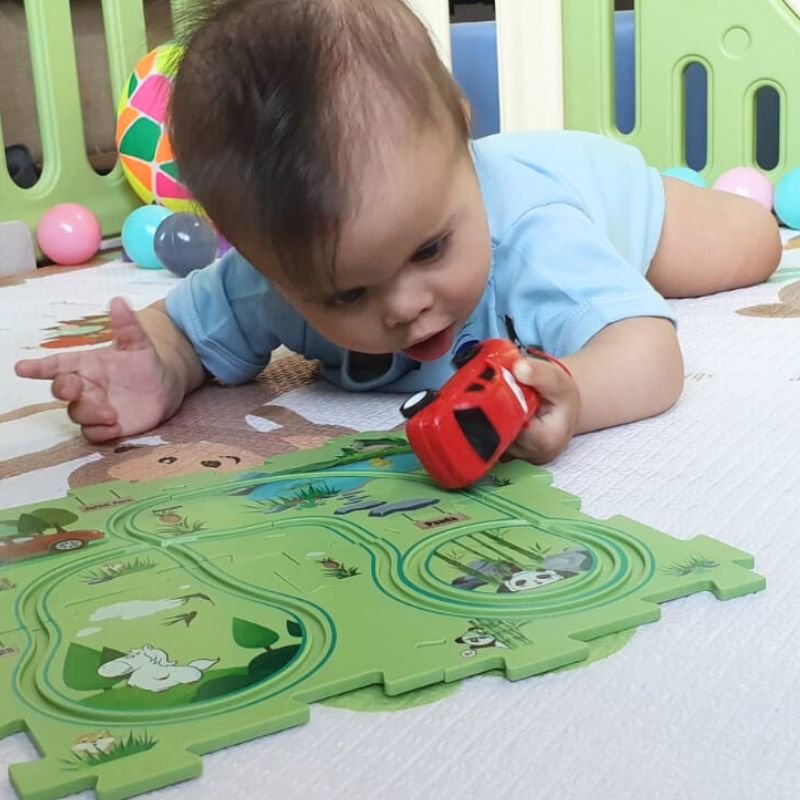Introduction
Proprioception is the body’s ability to sense its position, movement, and spatial orientation through receptors in the muscles and joints. This sensory input is crucial for coordinating movements and maintaining balance. For children with Down syndrome, proprioceptive challenges can impact their physical development, motor skills, and overall quality of life.
What is Proprioception?
Proprioception is often referred to as the “sixth sense,” as it provides information about body position without relying on visual cues. It allows individuals to perform tasks such as walking, running, or grasping objects without needing to look at their limbs constantly.
Key Functions of Proprioception
- Body Awareness: Proprioception helps children understand where their body parts are in relation to each other and their environment.
- Movement Coordination: It enables smooth coordination of movements by integrating sensory information from various body parts.
- Balance Maintenance: Proprioceptive feedback is essential for maintaining balance during activities like standing or walking.
- Motor Skill Development: Proper proprioceptive functioning supports the acquisition of fine and gross motor skills.
The Impact of Proprioception on Children with Down Syndrome
Children with Down syndrome often experience proprioceptive processing difficulties due to factors such as hypotonia (decreased muscle tone) and differences in sensory integration. These challenges can manifest in various ways:
- Poor Balance: Many children may struggle with balance-related activities due to insufficient proprioceptive input.
- Delayed Motor Skills: Difficulties in understanding body positioning can lead to delays in developing gross and fine motor skills.
- Difficulty with Coordination: Tasks requiring coordinated movements (e.g., catching a ball or riding a bike) may be particularly challenging.
- Sensory Overload or Under-Responsiveness: Some children may either overreact or underreact to sensory stimuli due to proprioceptive challenges.
Research Insights
Studies have shown that proprioceptive training can significantly enhance motor skills and balance in children with Down syndrome. For instance, a study found that engaging children in martial arts improved their proprioceptive abilities, leading to better postural control and coordination [2]. Another study highlighted how proprioceptive exercises positively influenced the stability and movement patterns of adolescents with Down syndrome [5].
Strategies for Improving Proprioception
To support the development of proprioceptive skills in children with Down syndrome, parents and caregivers can incorporate various activities into their daily routines:
1. Heavy Work Activities
Engaging in heavy work activities helps stimulate proprioceptive input effectively. Examples include:
- Carrying groceries or laundry baskets
- Pushing or pulling objects (e.g., toy carts)
- Squeezing stress balls or playdough
2. Balance Exercises
Incorporating balance exercises can enhance stability and coordination:
- Walking along a line or balance beam
- Tightrope walking using a rope on the ground
- Sitting on an exercise ball while performing tasks
3. Jumping Activities
Jumping provides significant proprioceptive feedback:
- Bouncing on a trampoline
- Jumping rope or hopping on one foot
- Swinging on swings while pushing off the ground
4. Sensory Play
Sensory play encourages exploration through touch and movement:
- Diving into a pit filled with balls or foam blocks
- Playing with sand or water to create resistance during movement
- Crawling through tunnels or obstacle courses
5. Martial Arts Training
The practice of martial arts has been shown to improve proprioceptive abilities significantly among children with Down syndrome [2]. Activities such as karate not only enhance balance but also promote discipline and social interaction.
The Role of Occupational Therapy
Occupational therapy can be incredibly beneficial for children with Down syndrome who struggle with proprioceptive processing. An occupational therapist can design individualized programs that focus on enhancing sensory integration through play-based activities tailored to each child’s needs.
The Importance of Early Intervention
The earlier a child receives support for proprioceptive issues, the better their chances are for successful motor skill development and overall functioning. Early intervention programs that focus on sensory integration therapy can make a significant difference in outcomes for children with Down syndrome.
Conclusion
Understanding proprioception is essential for supporting children with Down syndrome in their physical development and daily activities. By recognizing the challenges they face and implementing targeted strategies—such as engaging in heavy work activities, balance exercises, jumping activities, sensory play, and martial arts—parents and caregivers can help improve their children’s proprioceptive skills. With the right support, these children can enhance their overall development, leading to more fulfilling lives.
